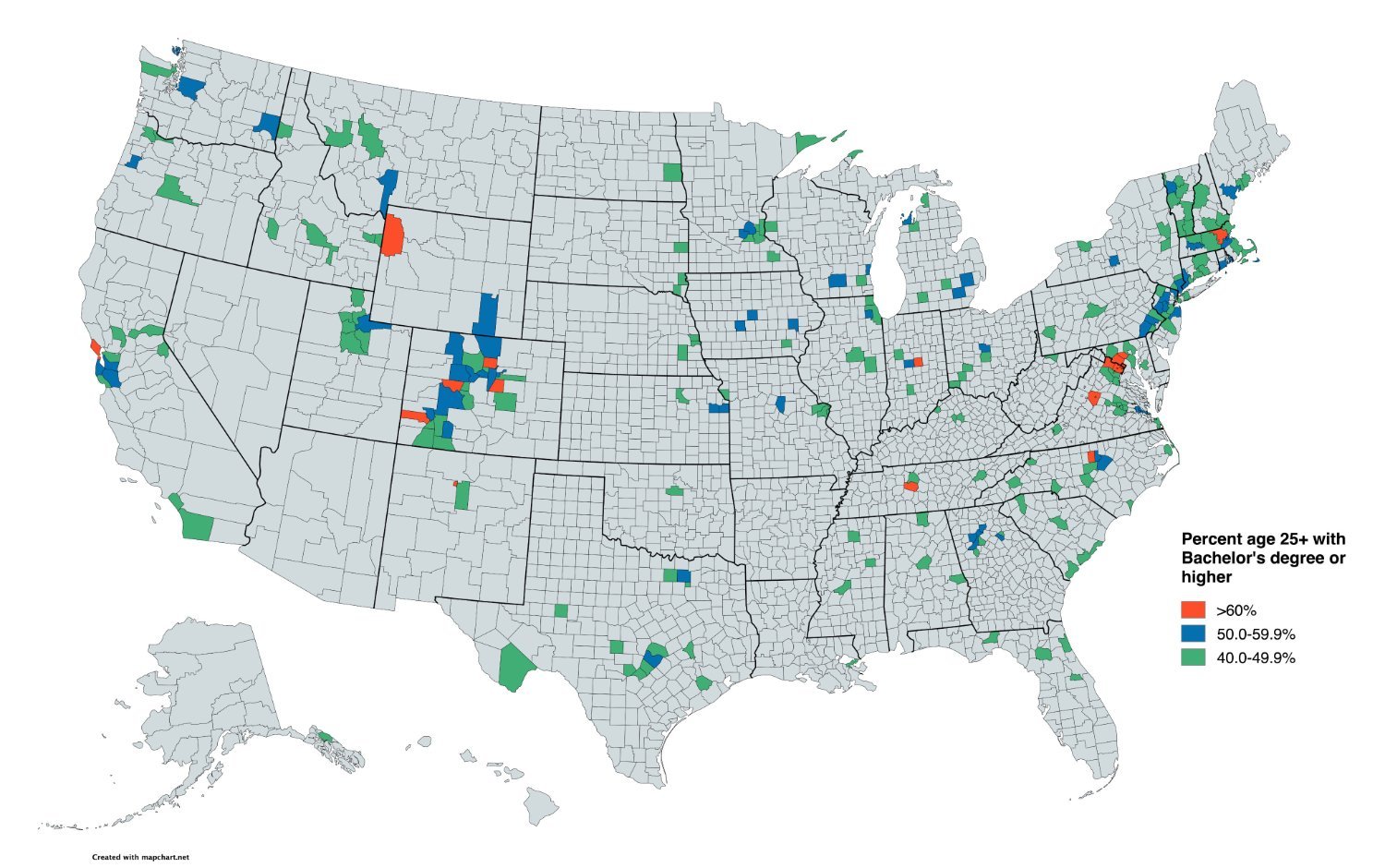this post was submitted on 17 Jan 2025
221 points (97.4% liked)
Map Enthusiasts
4265 readers
1 users here now
For the map enthused!
Rules:
-
post relevant content: interesting, informative, and/or pretty maps
-
be nice
founded 2 years ago
MODERATORS
you are viewing a single comment's thread
view the rest of the comments
view the rest of the comments

Why only count people older than 25?
Because otherwise the data would be artificially lower in areas with more children.
For example, imagine a suburb in Utah filled with college educated software engineers with big Mormon families. If you count the kids, it might look like people there don't have degrees.
Doesn't a bachelor's take 4-5 years, with people starting around 18-19? I guess we're only talking about a year or two so the higher age is to help cut down on the noise (doubt there's many people with bachelor's dying before 25 to skew the results)
Below 25 it depends on how fast you finish your studies whether you own a bachelor's degree yet or not.
It filters out college towns with large masters and doctorate programs.
That's a good point, need to control for students. Wouldn't 25 year olds still be in school for their doctorates though?
Yes, I think that's the point
they skew the numbers upwards.
Because my toddler shouldn't affect this map
21-22 is the average age to complete a bachelor's degree, so I'd guess - other than eliminating children, who couldn't possibly have gotten degrees yet - just evening out the data a bit to account for later starters or longer programs? They probably had a target 90% of degree-receivers or something like that